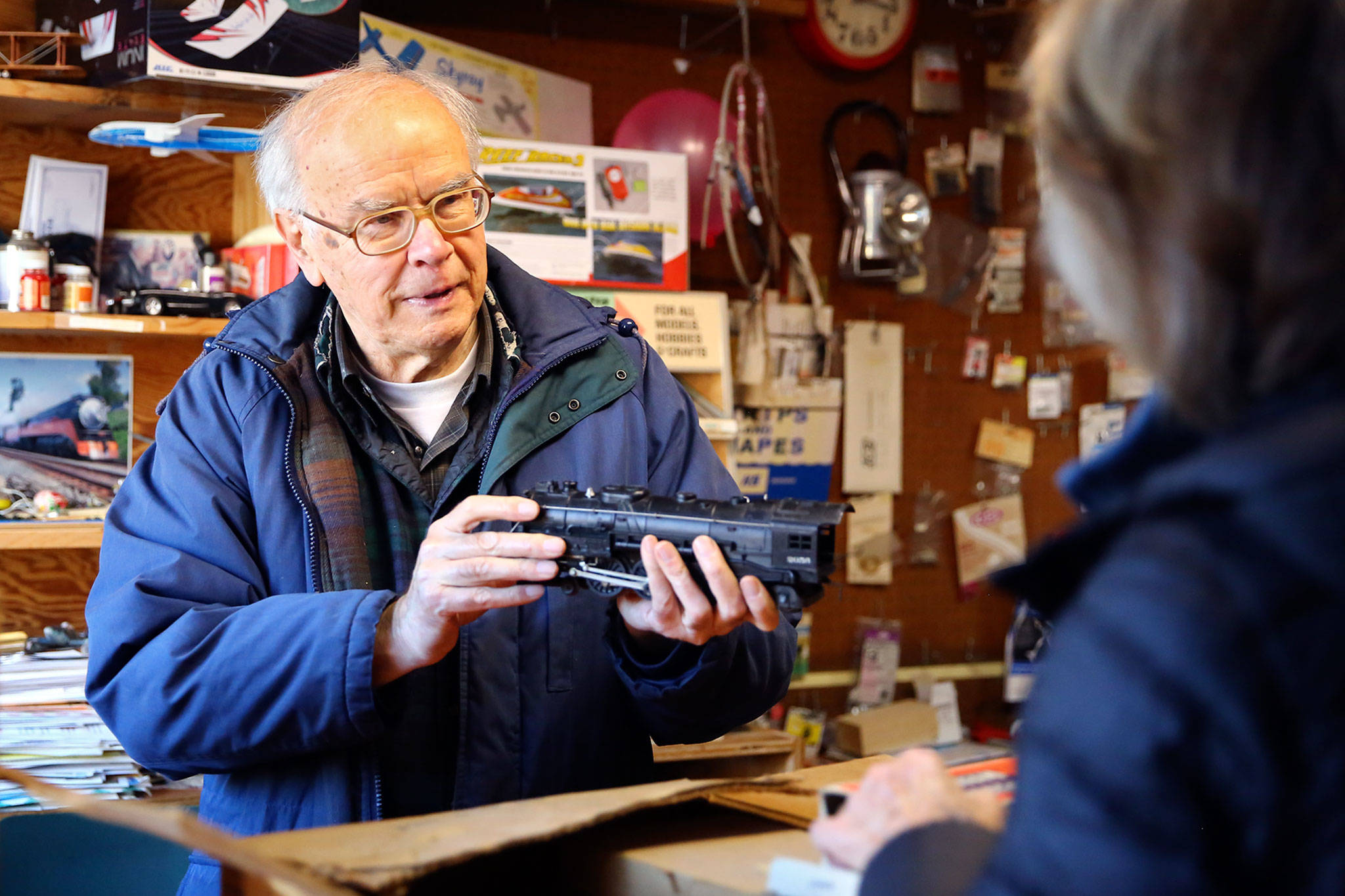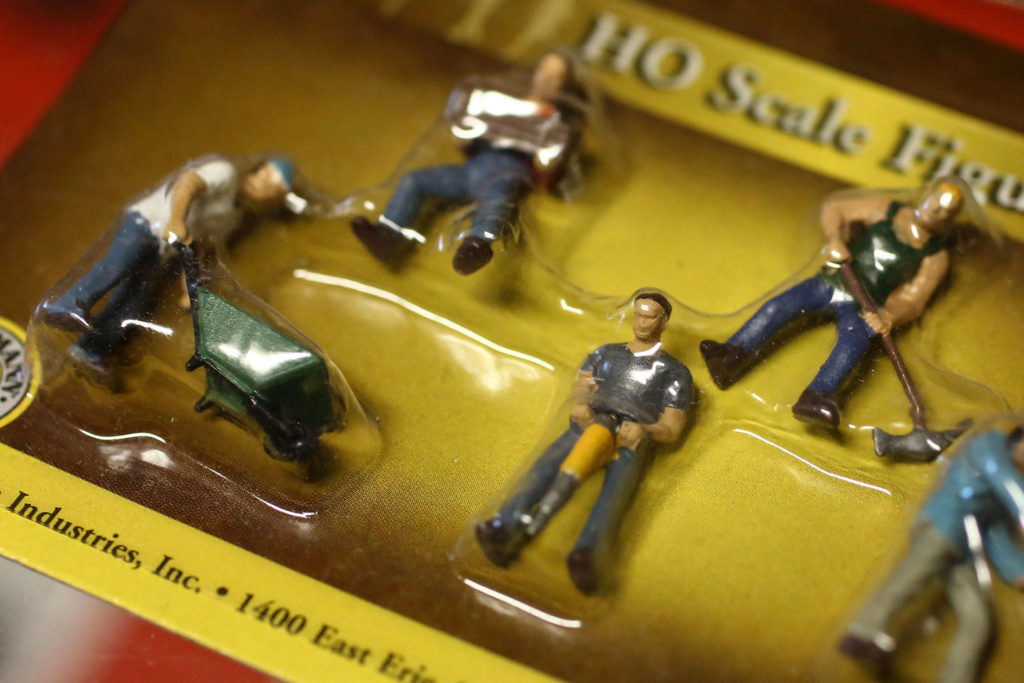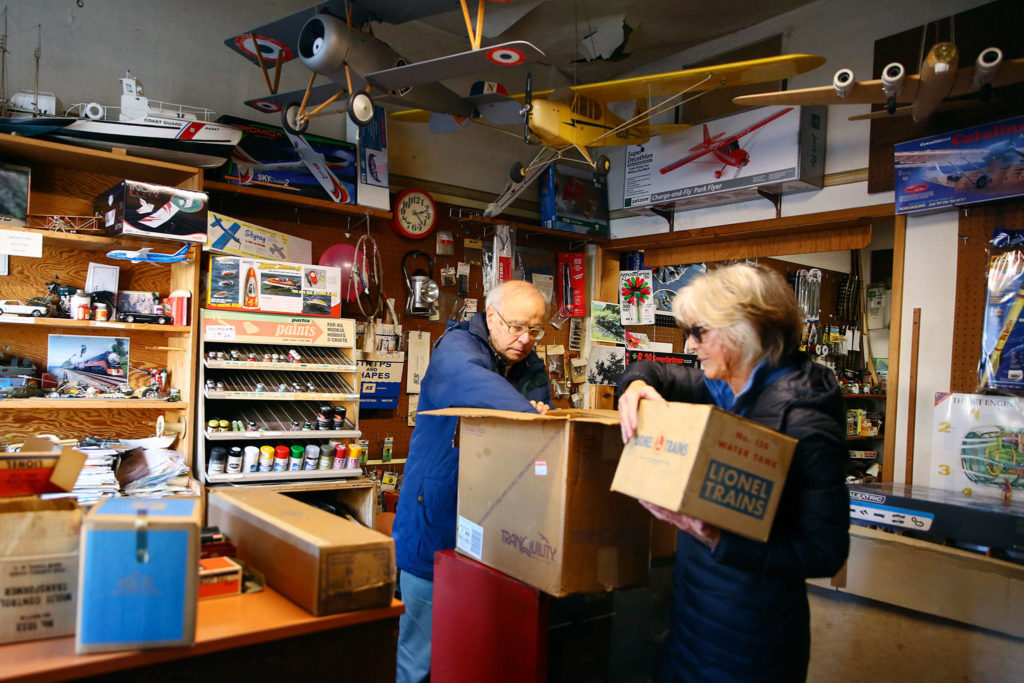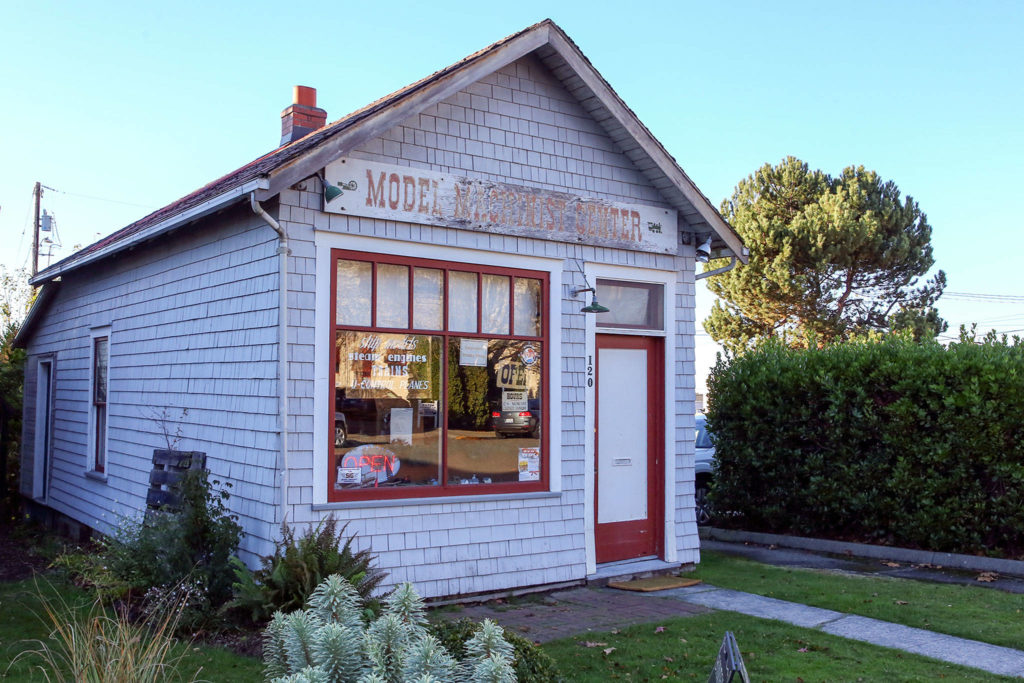EDMONDS — The smell of airplane glue and enamel paint hasn’t changed since the 1960s and 1970s when assembling model cars, boats, trains and planes was all the rage.
Richard Hunt, the owner of the Edmonds Hobby Shop, can recall a time when “kids were pretty much crazy about building things.”
Those things included 1/25th-scale plastic kit cars, balsa wood gliders, model airplanes and wooden boats.
In the past two decades, as video games have grown dominant, the popularity of model building has dropped off, and the kids who once spent hours gluing and clamping plastic parts together are now grown-ups with kids or grandkids of their own, he said.
Hunt’s brother, Roger, and their father, Richard Hunt, opened the hobby store at 120th Fourth Avenue South in the early 1970s, nearly 50 years ago.
The little hobby store — it’s in a tiny house — provided a modest living until about 10 or 15 years ago, Hunt said.
Now it’s a labor of love. “This is my semi-retirement,” joked Hunt, 77.
In the store’s model car section, Detroit circa 1960-70 reigns supreme.
There you’ll find models of some of the classic street rods and muscle cars, including a 1/25th-scale 1968 Dodge Charger and 1969 Corvette 427 Coupe, for about $25 to $30 each.
If it’s lift you’re seeking, a rubberband-powered balsa wood plane sells for about $4 and “flies up to 150 feet,” the packaging says.
For greater range, the store sells ready-to-fly model airplanes with electric motors that start at about $100.
Most of the hobby shop’s customers are adults, Hunt said.
Still, he sees parents bring their kids to the store to check out the the electric train sets and kits that are designed to snap together. “There’s no gluing or painting,” Hunt said.
“I see a lot of young boys that are train fanatics by the age of 4 — they usually drag their mom and dad in here,” he said. “The girl model builders? I have relatively few.”
“We have extremes,” Hunt said. “We have young kids under 10 that really like the trains and customers age 60 and above.”
For the older set, the allure is building “models and machines that meant something in their early years,” he said.
Former Edmonds resident Henry Simpson was a prolific model builder when he was a teen.
Simpson would use the income from his paper-route to buy kits, which cost $4 or $5, he said, or about $30 to $40 in today’s dollars.
Building a model? Before you start gluing everything together, “temper your excitement,” Simpson said. “Take your time and pay attention to detail. It doesn’t hurt to read the instructions.”
Modifications — from swapping parts to incorporating everyday items into a design — is encouraged.
“I used to swap out the bigger wheels and tires from one model to another,” said Simpson, who once fashioned a working suspension on one of his model cars from the springs of a ball point pen.
“Models were fun when I was a kid.” Simpson said. “I liked building or drawing things.”
By high school, his interest in models had waned. “After that, I was interested in real cars,” he said.
Then as now, some of the most popular kits are the model planes, which include fuel-engine-powered airplanes that connect to a 25-foot wire, Hunt said.
Finding the tiny engine that fits those models involves scouring the internet.
Cox, the California company that manufactured the two-stroke engines, went out of business several years ago, Hunt said.
The thumb-size engines were small but packed a wallop, he said. “They were pretty loud — like a miniature chainsaw.”
“One of the big trends in the last 10 years has been the shift from fuel powered engines (which run on a mixture of methanol, castor oil and nitromethane) to electric-powered engines,” he said.
Model-making is a great way to overcome the belief that you have to do something perfectly.
Don’t like the results? Pull it apart. Build it again.
“We all learn by failing,” Hunt said.
Janice Podsada; jpodsada@heraldnet.com; 425-339-3097; Twitter: JanicePods
Talk to us
> Give us your news tips.
> Send us a letter to the editor.
> More Herald contact information.





























